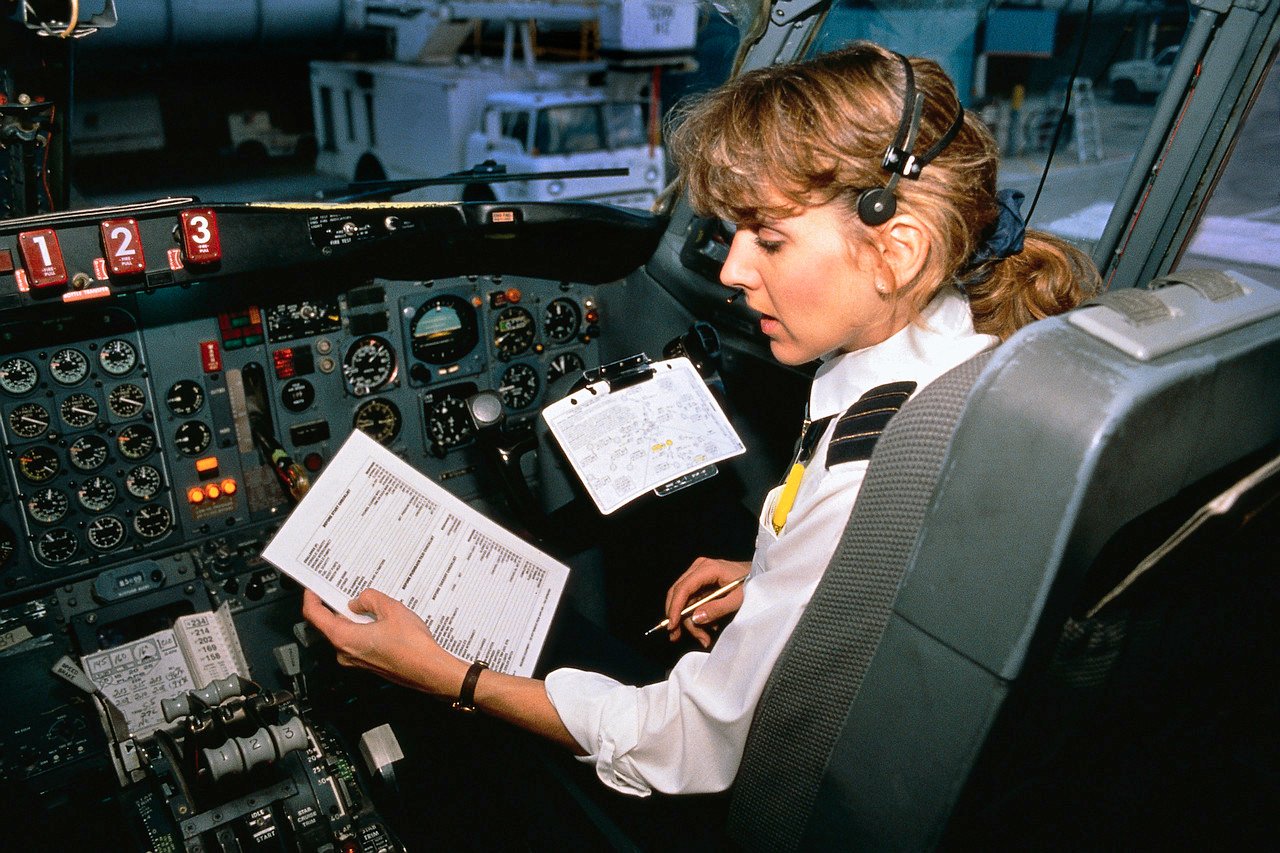
In the high-stakes world of aviation, safety is the cornerstone of every operation. From commercial airlines to general aviation, ensuring the well-being of passengers, crew, and aircraft is a non-negotiable priority.
At the heart of this mission are aviation safety managers, professionals tasked with preventing accidents, ensuring compliance with stringent regulations, and fostering a culture of safety. Their role is not merely a job but a profound commitment to safeguarding lives and upholding the integrity of the aviation industry.
What sets the most effective aviation safety managers apart? It’s not just their technical expertise or knowledge of regulations but a set of consistent habits that enable them to excel in their roles. These habits, grounded in industry best practices and insights from seasoned professionals, are essential for navigating the complexities of aviation safety management.
In this comprehensive guide, we explore seven key habits that highly effective aviation safety managers practice to enhance their impact and contribute to a safer aviation environment.
Related Aviation Safety Manager Articles
- What Makes a Good Aviation Safety Manager?
- Career Advice for Aspiring Safety Managers
- How to Tell If Aviation Safety Manager Is Doing Their Job
Symptoms of a disorganized safety manager will arise, such as:
- Risk management processes will not be followed
- Corrective actions and preventive actions will not be completed on time
- Safety audits will be late, messy and stressful, and fail
- SMS implementation activities will always be behind schedule
- Safety meetings will not be documented or scheduled properly
- Safety newsletters
- It will appear to the employees that the safety manager just doesn’t quite “have it together”
On the flip side of this coin, a well-organized aviation safety manager usually administers an efficiently functioning SMS. The significant hiccup areas, such as passing safety audits and SMS implementation activities, will be far more successful because a safety manager will be able to focus their efforts where it counts, rather than simply "getting it together."
The Role of an Effective Aviation Safety Manager
Before delving into the habits, it’s crucial to understand the scope of an aviation safety manager’s responsibilities. Safety managers are responsible for the development, operation, and continuous improvement of the Safety Management System (SMS). They serve as the focal point for safety management issues, promoting safety awareness and ensuring that safety processes are prioritized alongside operational activities.
Effective safety managers possess a deep understanding of safety principles, risk management practices, and the interplay of disciplines such as psychology and human factors. Many are adept at developing and maintaining integrated SMS and QMS, advising management on compliance, and objectively evaluating system effectiveness. Exceptional communication skills, both written and verbal, and the ability to collaborate across organizational levels are also critical. With this foundation in mind, let’s explore the habits that elevate safety managers to the highest levels of effectiveness.
Related QMS and SMS Articles
- What Are Differences of Aviation Safety Management Systems (SMS) and QMS Programs
- 5 Easy Ways to Combine QMS and SMS in Aviation Operations
- How Integrating QMS and SMS Will Improve Aviation Safety Audit Performance
Seven Habits of Highly Effective Aviation Safety Managers

1. Continuous Learning and Adaptation
The aviation industry is dynamic, with regulations, technologies, and best practices evolving rapidly. Effective safety managers make continuous learning a cornerstone of their practice. This involves staying updated with the latest standards from organizations like the International Civil Aviation Organization (ICAO) and subscribing to publications from the Flight Safety Foundation. Attending industry conferences, participating in workshops, and engaging with professional networks provide opportunities to learn from peers and experts.
Continuous learning also means reflecting on past experiences. By analyzing incident reports and safety data, managers identify areas for improvement and adapt their strategies. For example, Revanth Gattupalli, a seasoned aviation safety manager, emphasizes the importance of education in his interview with Travel Radar, noting that safety majors exhibit higher safety behavior and awareness, which enhances their effectiveness.
2. Proactive Risk Management
Proactive risk management is the bedrock of aviation safety. Effective safety managers habitually identify potential hazards, assess risks, and implement mitigation measures before incidents occur. This involves conducting routine safety audits, performing hazard analyses, and encouraging staff to report near-misses. Such proactive measures are critical for preventing accidents and ensuring operational safety.
A compelling example comes from Revanth Gattupalli, who investigated a 30% airspeed difference caused by less than 1 gram of sand in a pitot tube. His thorough investigation led to the aircraft’s safe return, preventing a potential accident. This case underscores the importance of attention to detail and proactive intervention.
Related Articles on Proactive Aviation Risk Management
- Difference Between Reactive, Predictive and Proactive Risk Management in Aviation SMS
- From Reactive to Proactive Risk Management in Aviation SMS
- How to Practice Reactive, Proactive, and Predictive Risk Management in Your SMS
3. Effective Communication
Communication is a vital habit for aviation safety managers. They must consistently share safety information with all organizational levels, from frontline staff to upper management. This includes conducting regular safety meetings, distributing newsletters, and utilizing digital platforms for safety promotion. Effective communication also involves listening to employees’ concerns and feedback, fostering an open dialogue that yields valuable operational insights.
Safety managers act as facilitators, communicating safety-related issues to top management and being readily available to operational staff. By ensuring that safety measures are clearly understood and practical, managers enhance compliance and engagement across the organization.
4. Data-Driven Decision Making
In an era of abundant data, effective safety managers leverage analytics to make informed decisions. This habit involves setting and monitoring key safety performance indicators (KPIs), analyzing trends, and using statistical tools to identify emerging risks. For instance, tracking incident frequencies or compliance rates can highlight areas needing attention, enabling targeted interventions.
Top-performing safety managers use aviation safety database software to extract data insights, automate notifications, and monitor performance. By grounding decisions in empirical evidence, managers ensure their strategies are both effective and efficient.
Related Aviation Safety Software Articles
- How to Choose Aviation SMS Software - Educating SMS Professionals
- How to Choose the Best Aviation Safety Database Software
- 20 Benefits of Aviation SMS Software
5. Fostering a Safety Culture
A robust safety culture is essential for any aviation organization. Effective safety managers make it a habit to promote and nurture this culture by encouraging open reporting of safety issues without fear of retribution, recognizing safe behaviors, and involving employees in safety initiatives. Leading by example, they demonstrate a commitment to safety that inspires others.
Patricia Mathes, an FAA Aviation Safety Inspector, emphasizes the importance of making a difference through teamwork and critical thinking in her FAA interview. By fostering a safety-first mindset, managers create an environment where safety is a shared responsibility, enhancing overall organizational safety.
6. Efficient Use of Technology
Technology is a game-changer in aviation safety management. Effective safety managers stay abreast of technological advancements and integrate them into their SMS. This includes using safety management software for incident reporting, risk assessment, and performance monitoring. Web-based SMS databases streamline documentation, automate workflows, and provide real-time data access, allowing managers to focus on strategic initiatives.
The Aviation Safety Blog highlights that tools like SMS Pro enhance transparency, track KPIs, and reduce audit findings. By adopting these technologies, safety managers improve efficiency and maintain accurate, up-to-date records.
7. Persistence and Resilience

Implementing an effective SMS is a long-term endeavor that demands persistence and resilience. Safety managers often face challenges such as
- resistance to change,
- budget constraints, or
- lack of immediate recognition.
However, effective managers remain committed, understanding that their work is critical for preventing accidents and saving lives.
An SMS implementation is a marathon, not a sprint, noting that managers should expect criticism during audits or incidents rather than daily praise. By managing expectations and focusing on long-term impact, safety managers maintain their motivation and drive continuous improvement.
Related Aviation Safety Manager Articles
- How Aviation Safety Managers Can Improve Safety Reporting Cultures
- How Safety Managers Increase Their Power in Aviation SMS
- Why/When Aviation Safety Managers Don't Need Operational Experience
Real-World Insights
Insights from industry professionals underscore the importance of these habits. Revanth Gattupalli’s research, published in the Psychology and Behavioral Science International Journal, demonstrates that safety education correlates with improved hazard identification and safety behavior. Similarly, Patricia Mathes’ 40-year career with the FAA highlights the value of flexibility and teamwork in safety roles. These examples illustrate how the seven habits translate into tangible safety outcomes.
Conclusion
Aviation safety managers are the unsung heroes of the aviation industry, working tirelessly to prevent accidents and ensure compliance. By adopting the habits of continuous learning, proactive risk management, effective communication, data-driven decision making, fostering a safety culture, efficient use of technology, and persistence, they can significantly enhance their effectiveness. These habits, supported by industry insights and real-world examples, are not just beneficial for safety managers but for the entire organization, contributing to a safer and more reliable aviation environment.
As the industry evolves, embracing these habits will be crucial for staying ahead of emerging risks and maintaining the highest safety standards. Aviation safety managers are encouraged to reflect on their practices, integrate these habits into their daily routines, and continue their vital work in safeguarding the skies.
Being extremely organized ensures safety managers and the SMS perform well.An SMS database solution will save considerable time. An SMS database comes with defined risk management workflows that may benefit your organization. If you don't have documented SMS risk management workflows, then I recommend acquiring an SMS database to help you out.
An SMS database will also assure the accountable executive that the SMS is managed properly. An SMS database solution offers:
- Accountability;
- Transparency; and
- Ability to continuously monitor hazards, risks and controls.
An aviation SMS database is a safety manager's best friend. The SMS database will make your safety and quality team's work more professional and structured as processes are well-defined by a community of safety professionals.
Last updated May 2025.








